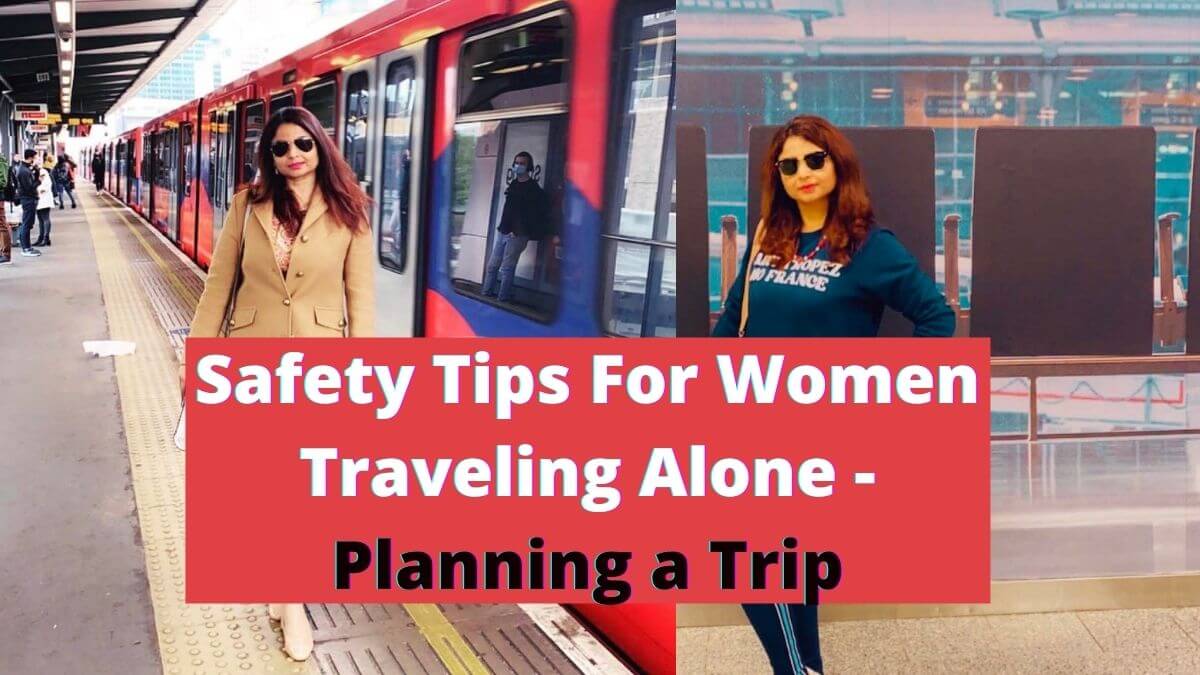Essential 17 Tips for Planning a Trip to Asia

Asia, with its vibrant cultures, breathtaking landscapes, and rich history, offers an extraordinary travel experience. To ensure your trip to Asia is everything you’ve dreamt of, proper planning is key. In this article, I will provide you with 17 Essential Tips for Planning a Trip to Asia.
I. Researching and Choosing Destinations
Asia is a vast continent with a myriad of destinations to explore. Start by researching different Asian countries and their unique attractions. Consider these factors for each destination such as:
- Cultural landmarks
- Natural wonders
- The climate and seasons
II. Understanding Visa Requirements
Navigating the visa process is crucial when planning a trip to Asia. Research and determine the visa requirements for your chosen destinations. Understand the options available, such as:
- VVsa-free countries
- Visa-on-arrival
- E-visas
Plan accordingly and allow sufficient time for visa applications.
III. Determining the Best Time to Visit
The timing of the trip can greatly impact your experience in Asia.
- Consider weather patterns, festivals, and events that may be worth experiencing.
- Identify off-peak and peak travel periods to help you make informed decisions about when to visit specific destinations.
IV. Budgeting and Cost Estimation
Setting a realistic budget is essential for a smooth trip. Research the cost variations across Asian countries, including accommodation, transportation, food, and activities.
Factor in both expected and unexpected expenses to ensure you have a well-planned budget.
V. Booking Flights and Accommodation
Finding affordable flights and suitable accommodation is crucial.
- Explore various options, compare prices, and book well in advance to secure the best deals.
- Choose accommodation based on your preferences and budget, whether it’s hotels, homestays, or hostels.
VI. Planning Transportation Within Asia
Transportation within Asia can vary greatly from country to country.
- Familiarize yourself with the available options, such as domestic flights, trains, buses, and taxis.
- Learn about public transportation systems to efficiently navigate your chosen destinations.
VII. Packing Essentials and Travel Gear
Create a comprehensive packing list based on your destination and activities.
- Consider the climate and pack suitable clothing and accessories.
- As well, bring essential travel gear such as a sturdy backpack, universal power adapter, and travel-sized toiletries.
VIII. Cultural Etiquette and Customs
Respecting local customs and traditions is vital when traveling in Asia.
- Research the cultural etiquette of each country you plan to visit.
- Understand appropriate dress codes, and behavior, and learn basic phrases in the local language to enhance your interactions with locals.
This thing will make your trip more enjoyable.
IX. Health and Safety Precautions
Prioritize your health and safety while traveling in Asia.
- Check if any vaccinations are recommended and obtain them before your trip.
- Familiarize yourself with common travel illnesses and take necessary precautions.
- As well,, familiarize yourself with local laws and regulations for a hassle-free journey.
X. Money Matters: Currency and Banking
Understand the currency exchange options and rates in your chosen destinations. Plan how you will manage your finances while traveling, whether it’s:
- Carrying cash,
- Using credit cards, or
- Relying on ATM withdrawals.
Research the availability of ATMs and cashless payment systems in each country.
XI. Exploring Local Cuisine and Dining Tips
Asia is renowned for its diverse and delicious cuisine. Indulge in the flavors of each destination by sampling street food and local delicacies.
Familiarize yourself with restaurant etiquette and dining customs to fully appreciate the culinary experiences Asia has to offer.
XII. Planning Sightseeing and Activities
Research and plan your sightseeing activities to make the most of your trip.
- Identify must-visit attractions and landmarks in each destination you’re visiting.
- Consider organizing guided tours to gain deeper insights into the local culture and history.
Don’t forget to explore off-the-beaten-path destinations and hidden gems for a more unique and authentic experience.
XIII. Language Barriers and Communication
Overcoming language barriers can enhance your travel experience in non-English speaking countries.
- Utilize translation apps and tools to communicate with locals effectively.
- Learn basic phrases and greetings in the local language to show respect and engage in conversations.
Don’t hesitate to seek assistance from locals who may be eager to help.
XIV. Preparing for Cultural Shock and Adaptation
Embrace the cultural differences you may encounter in Asia. Be open-minded and respectful when encountering unfamiliar customs and traditions.
Understand that cultural shock and adaptation phases are normal during travel. Stay curious, ask questions, and immerse yourself in the local way of life for a more enriching experience.
XV. Photography Tips and Etiquette
Capture the beauty of Asia through photography while being respectful of local customs.
- Familiarize yourself with photography guidelines in culturally sensitive areas, as some places may have restrictions.
- Remember to ask for permission when photographing people and be mindful of their privacy.
Preserve your memories ethically and responsibly, leaving a positive impact on the communities you visit.
XVI. Environmental Responsibility and Sustainability
Promote sustainable travel practices in Asia to help preserve its natural beauty for future generations.
- Reduce plastic waste by carrying a reusable water bottle and shopping bag.
- Minimize your carbon footprint by opting for eco-friendly transportation options whenever possible.
Support local communities and initiatives that prioritize environmental conservation and responsible tourism.
XVII. Staying Connected: Internet and Communication
Staying connected is essential in today’s digital world. Research the availability of reliable internet connectivity in the countries you’re visiting.
Consider purchasing local SIM cards or portable Wi-Fi devices to ensure access to the internet on the go.
Stay connected to loved ones and use online resources to navigate your destinations effectively.

FAQs: Essential Tips for Planning a Trip to Asia
Q: 1. What are some popular destinations to visit in Asia?
Ans: Some popular destinations in Asia include Tokyo, Japan; Bangkok, Thailand; Bali, Indonesia; Hong Kong, China; Seoul, South Korea; and Siem Reap, Cambodia, among many others. Each destination offers its own unique attractions and experiences.
Q:2. How far in advance should I apply for visas to Asian countries?
Ans: It is recommended to apply for visas well in advance of your travel dates. The specific time frame may vary depending on the country and type of visa. Some visas can be obtained upon arrival, while others require embassy applications or e-visas. Research the specific requirements and processing times for each country you plan to visit, and allow ample time for the application process.
- Road Trip Activities for Teens Ideas That Beat Boredom, Spark Laughs, and Make Every Mile Memorable (2026 Guide)
- Top Trending Travel Destinations for 2025 (US Traveler Picks)
- 9 Best Places to Travel in March 2025 USA: Embrace the Spring Season
- 10 Packing Tips for Stress-Free Travel with Kids
- Best Solo Travel Destinations in 2025 (USA & Europe)
FAQs: Essential Tips for Planning a Trip to Asia
Q:3. What is the best time to visit Asia in terms of weather?
Ans: The best time to visit Asia in terms of weather varies depending on the region and country you plan to visit. Research the climate and seasons of your desired destinations to determine the most favorable time to visit. Consider factors such as monsoon seasons, extreme temperatures, and peak tourist seasons when making your decision.
Q:4. How can I find affordable flights to Asia?
Ans: To find affordable flights to Asia, consider booking well in advance and being flexible with your travel dates. Utilize flight comparison websites and sign up for fare alerts to monitor prices.
Q:5. Are there any specific customs or cultural practices I should be aware of?
Ans: Yes, it’s important to be aware of and respect the customs and cultural practices of the countries you visit in Asia. Research common customs such as removing your shoes before entering homes or religious sites, appropriate dress codes, and greetings.
What are some essential items to pack for a trip to Asia?
Some essential items to pack for a trip to Asia include:
- Comfortable walking shoes
- Lightweight and breathable clothing suitable for the local climate
- Sunscreen
- Insect repellent
- A universal power adapter
- A Travel-sized first-aid kit
- A photocopy of essential travel documents, and
- A travel lock for securing your belongings
Q:6. Is it safe to drink tap water in Asia?
Ans: Drinking tap water in Asia can vary depending on the country. In general, it is advisable to drink bottled or filtered water to avoid the risk of waterborne illnesses.
Q:7. How can I contribute to sustainable tourism while traveling in Asia?
You can contribute to sustainable tourism in Asia by supporting local businesses, choosing eco-friendly accommodations, reducing plastic waste by carrying a reusable water bottle and shopping bag, respecting local wildlife and natural areas, and participating in community-based tourism initiatives that benefit local communities and the environment.
What are some recommended local dishes to try in Asia?
Asia is known for its diverse and delicious cuisine. Some recommended local dishes to try include:
- Sushi, Tempura and ramen in Japan
- Pad Thai and green curry in Thailand
- Nasi goreng, Sambal, and satay in Indonesia
- Dim sum in Hong Kong
- Peking Duck, Kung Pao Chicken, and Dim Sum in China
- Satay in Indonesia & South East Asia
- Kimchi and bibimbap in South Korea
- Pho in Vietnam.
- Biryani and Tandoori Chicken in Iran/North India
- Donner Kebab/Shawarma in Turkey & Middle East
- Khoresht-e Ghormeh Sabzi in Iran
- Pilav, Pilaf or Osh in East and Central Asia
- Butter Chicken Curry, Paratha, and Naan in India
Planning a trip to Asia requires careful consideration and research. By researching and choosing destinations, understanding visa requirements, determining the best time to visit, budgeting wisely, and booking flights and accommodations strategically, you can set the foundation for an unforgettable journey.
Additionally, I hope Essential 17 Tips for Planning a Trip to Asia help your next trip. Embrace the diversity of Asia, savor the local cuisine, and create lasting memories as you embark on your ultimate adventure.





